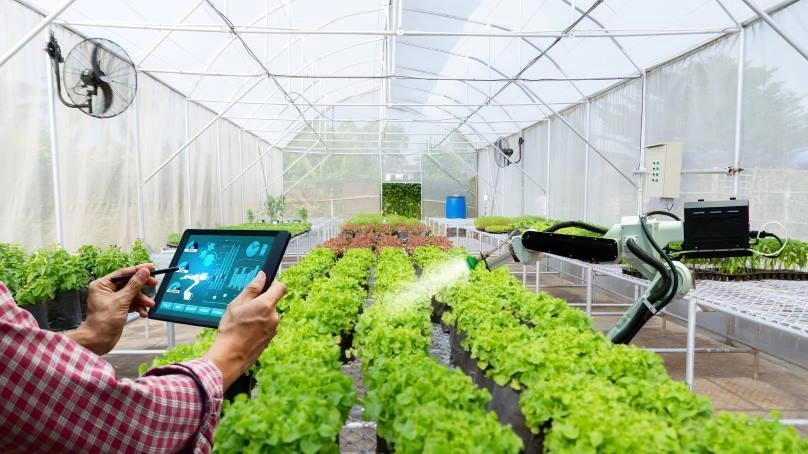Introduction
Agriculture has always been the backbone of human civilization, providing food, raw materials, and employment for billions. However, as the global population continues to grow and climate change poses new challenges, the agricultural sector must evolve. Innovations in technology, sustainability, and efficiency are shaping the future of farming, ensuring food security while minimizing environmental impact.
Key Trends Shaping the Future of Agriculture
Precision Agriculture
Precision agriculture leverages data analytics, GPS technology, and artificial intelligence (AI) to optimize farming operations. By using real-time data, farmers can make informed decisions about irrigation, fertilization, and pest control, improving yields and reducing waste.
Vertical Farming and Urban Agriculture
As urbanization increases, the demand for space-efficient farming solutions is rising. Vertical farming, hydroponics, and aeroponics allow crops to grow in controlled indoor environments, using minimal land and water resources.
Automation and Robotics
The use of autonomous tractors, drones, and robotic harvesters is revolutionizing agriculture by improving efficiency and reducing labor costs. AI-powered machines can monitor crop health, detect diseases, and even harvest produce with precision.
Climate-Smart Agriculture
With climate change affecting traditional farming practices, climate-smart agriculture focuses on adaptation and resilience. This includes drought-resistant crops, improved soil management, and agroforestry techniques that help combat environmental challenges.
Blockchain in Agriculture
Blockchain technology is enhancing transparency and traceability in the food supply chain. By recording transactions securely, farmers and consumers can verify the origin of products, ensuring quality and reducing fraud.
Alternative Protein Sources
The demand for plant-based and lab-grown proteins is increasing as consumers seek sustainable and ethical food options. Innovations in this field are providing viable alternatives to traditional livestock farming, reducing the industry’s carbon footprint.
Sustainable Innovations in Agriculture
Regenerative Agriculture
Regenerative agriculture focuses on soil health, biodiversity, and carbon sequestration. Techniques such as cover cropping, no-till farming, and crop rotation improve soil fertility and reduce the need for synthetic fertilizers.
Water Conservation Techniques
With water scarcity becoming a major concern, farmers are adopting drip irrigation, rainwater harvesting, and water recycling systems to optimize usage and prevent wastage.
Biopesticides and Organic Farming
The shift towards organic farming and natural pest control methods reduces dependency on chemical fertilizers and pesticides, promoting healthier ecosystems and safer food production.
Challenges Facing the Agricultural Sector
Climate Change and Extreme Weather
Unpredictable weather patterns, droughts, and floods threaten global food production. Investing in resilient crops and sustainable practices is crucial to mitigate these risks.
Land Degradation and Soil Erosion
Intensive farming practices can lead to soil degradation, nutrient depletion, and erosion, reducing agricultural productivity. Sustainable land management practices are essential for long-term food security.
Technological Access and Adoption
While agricultural technology is advancing rapidly, many small-scale farmers struggle to access or afford these innovations. Bridging the gap through education, subsidies, and policy support is essential.
The Future of Global Food Production
Smart Farms and AI-Driven Solutions
AI and machine learning will continue to play a major role in farm management, predictive analytics, and automation, leading to higher efficiency and reduced environmental impact.
Sustainable Supply Chains
With growing concerns over food security, agricultural supply chains will become more efficient, transparent, and resilient to disruptions, ensuring fair trade and reduced waste.
Integration of Renewable Energy
Farms will increasingly rely on solar, wind, and bioenergy to power operations, reducing reliance on fossil fuels and cutting greenhouse gas emissions.
Conclusion
The future of agriculture lies in innovation, sustainability, and adaptability. By embracing cutting-edge technologies, climate-smart practices, and alternative food sources, the industry can meet the challenges of a growing population while minimizing environmental impact. As agriculture continues to evolve, collaboration between governments, businesses, and farmers will be crucial in shaping a resilient and sustainable global food system.

